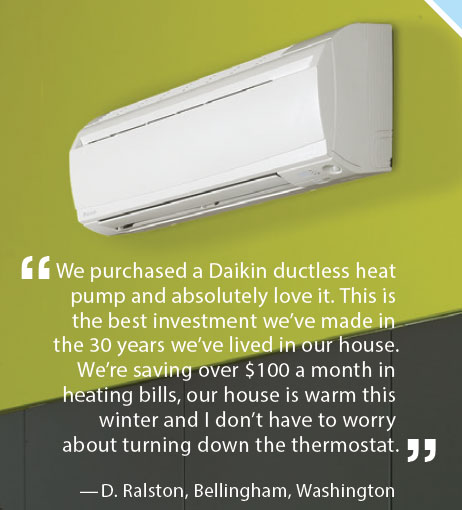Ductless mini-split systems heat and cool small spaces where conventional HVAC is not an option.
The main advantages of a ductless mini-split HVAC system are its small size, quiet operation, and the flexibility it has for heating and cooling individual areas within your home. It’s a good choice if:
- You have an older house that lacks ductwork.
- You’re building an addition that will be difficult to tie into your central air-conditioning system.
- You want to supplement your existing heating and cooling without resizing your existing HVAC system.
What does mini-split mean?
There are two main components: an outdoor condensing unit (smaller than standard air-source heat pumps and easy to conceal behind landscaping), and the indoor evaporator (fan coil) unit. These are connected by copper tubing and require electricity.
Installation is less invasive than retrofitting with conventional ductwork, requiring only a 3-inch diameter hole in the outside wall. A professional heating and cooling specialist can set up a ductless mini-split system in a few hours.
How much heating and cooling capacity?
According to the nonprofit Northwest Energy Efficiency Alliance, one indoor unit can provide between ¾ and 2½ tons of heating and cooling, depending on its BTU capacity rating. Outdoor units are sized to meet the combined load of all heating/cooling zones. One outdoor unit can connect up to four indoor air-handling units to heat or cool several rooms or zones.
What’s it cost?
Expect to pay between $1,500 and $6,000 per heating/cooling zone, which is about 30% more than conventional central HVAC systems, excluding ductwork.
Disadvantages
Despite their lightweight, streamlined design, the indoor evaporators can be aesthetically challenging. They come only in standard beige, are nearly as large as a flat-screen television, and cannot be painted. They typically are placed on a wall or ceiling, meaning they’re not easy to conceal.
Individual zoning saves energy
Because mini splits deliver all their conditioned air directly to individual rooms, there’s no chance for air to leak out through long stretches of ductwork. That lets mini splits use 25% to 50% less energy that electric resistance and forced air systems.
You’ll save even more energy with programmable thermostats for each air handler. Some ductless split-system air conditioners and heat pumps are Energy Star-rated and qualify for state tax incentives and local utility rebates.

